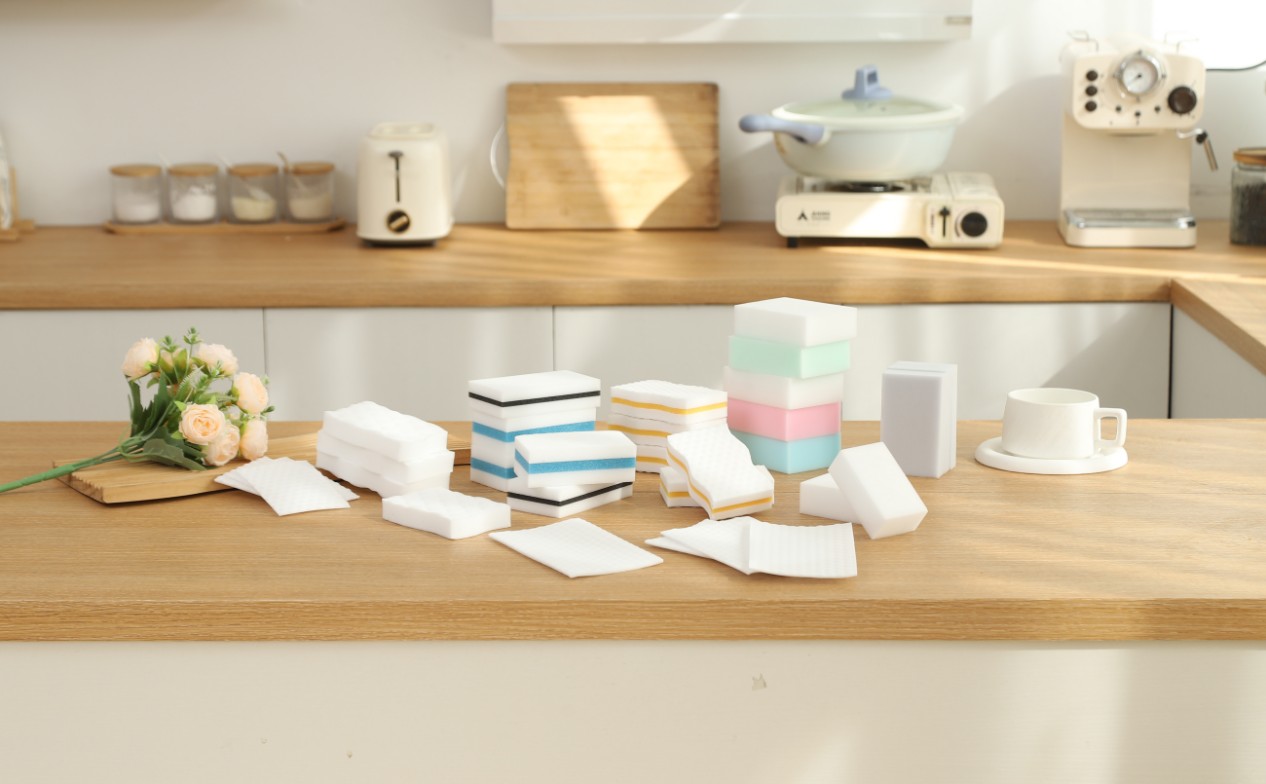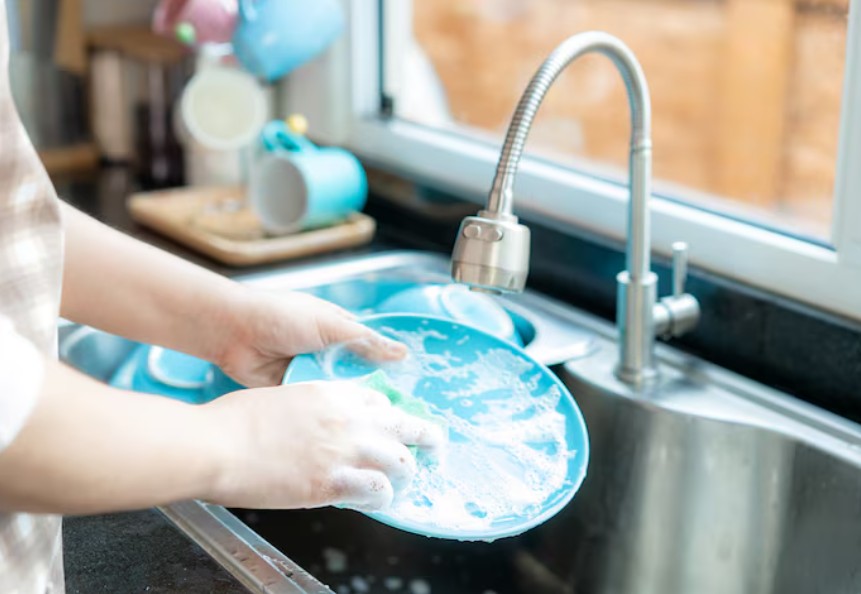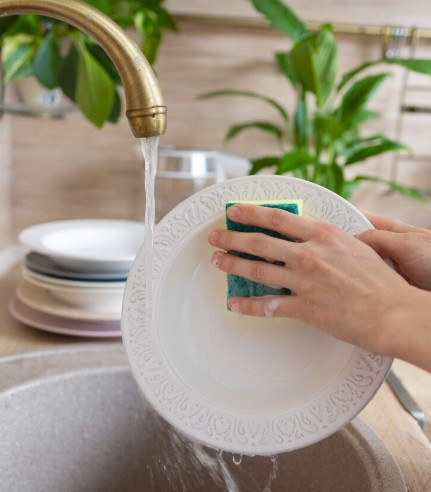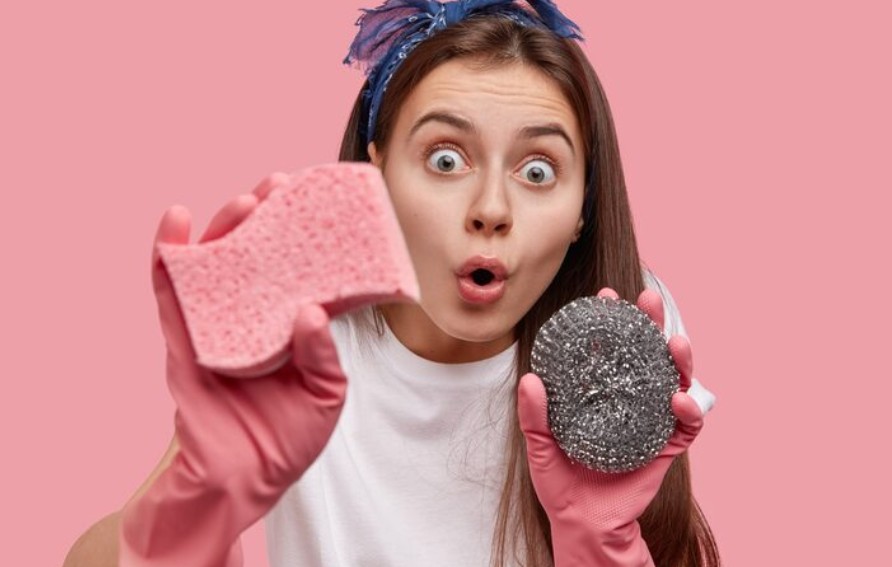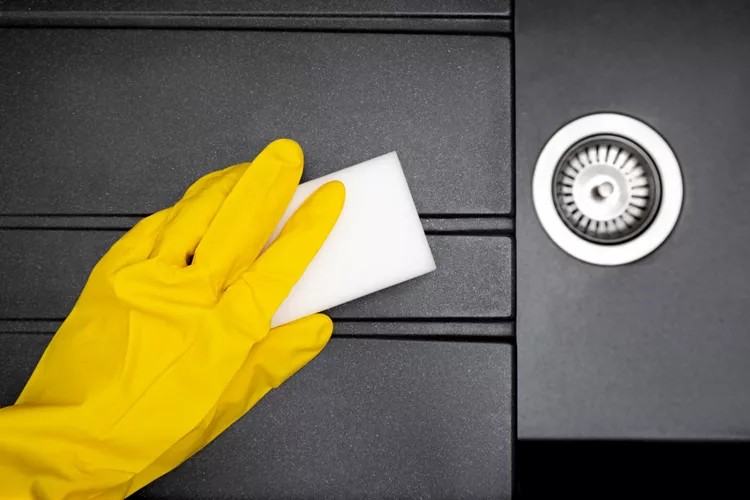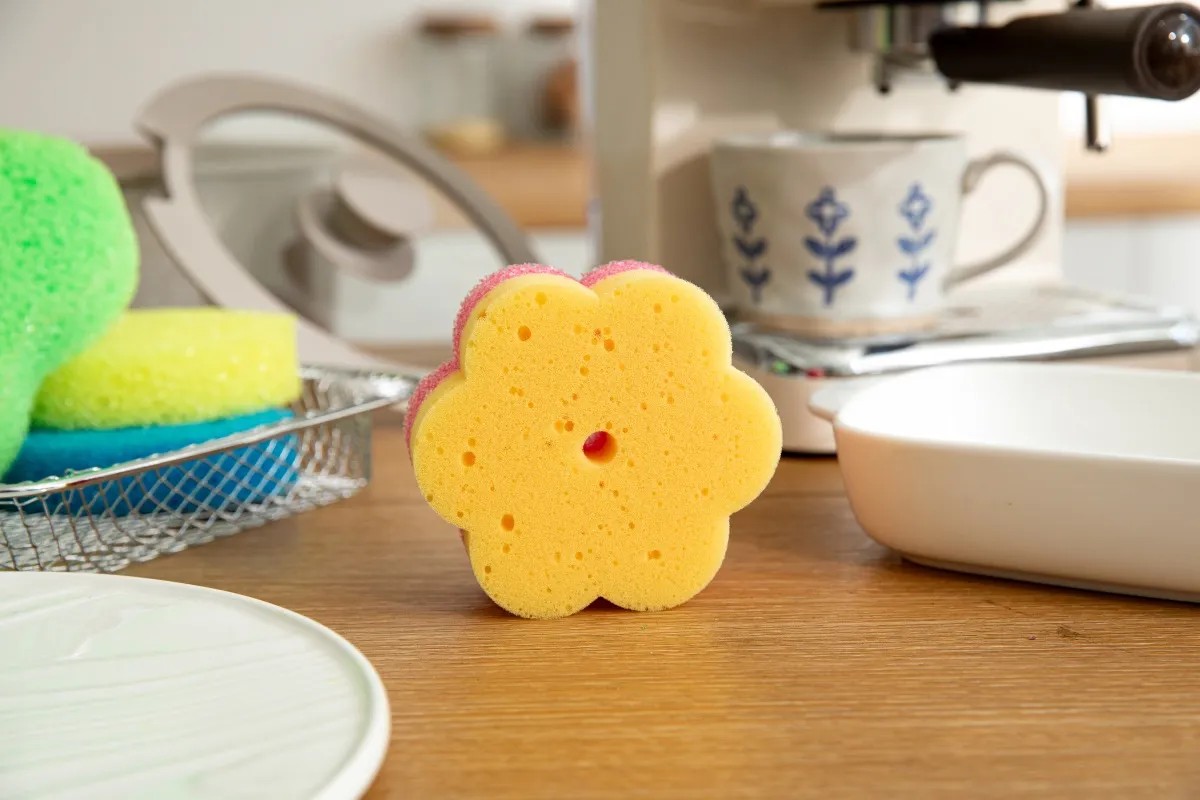How Can You Safely Use Melamine Sponge on Your Car
2025-10-23
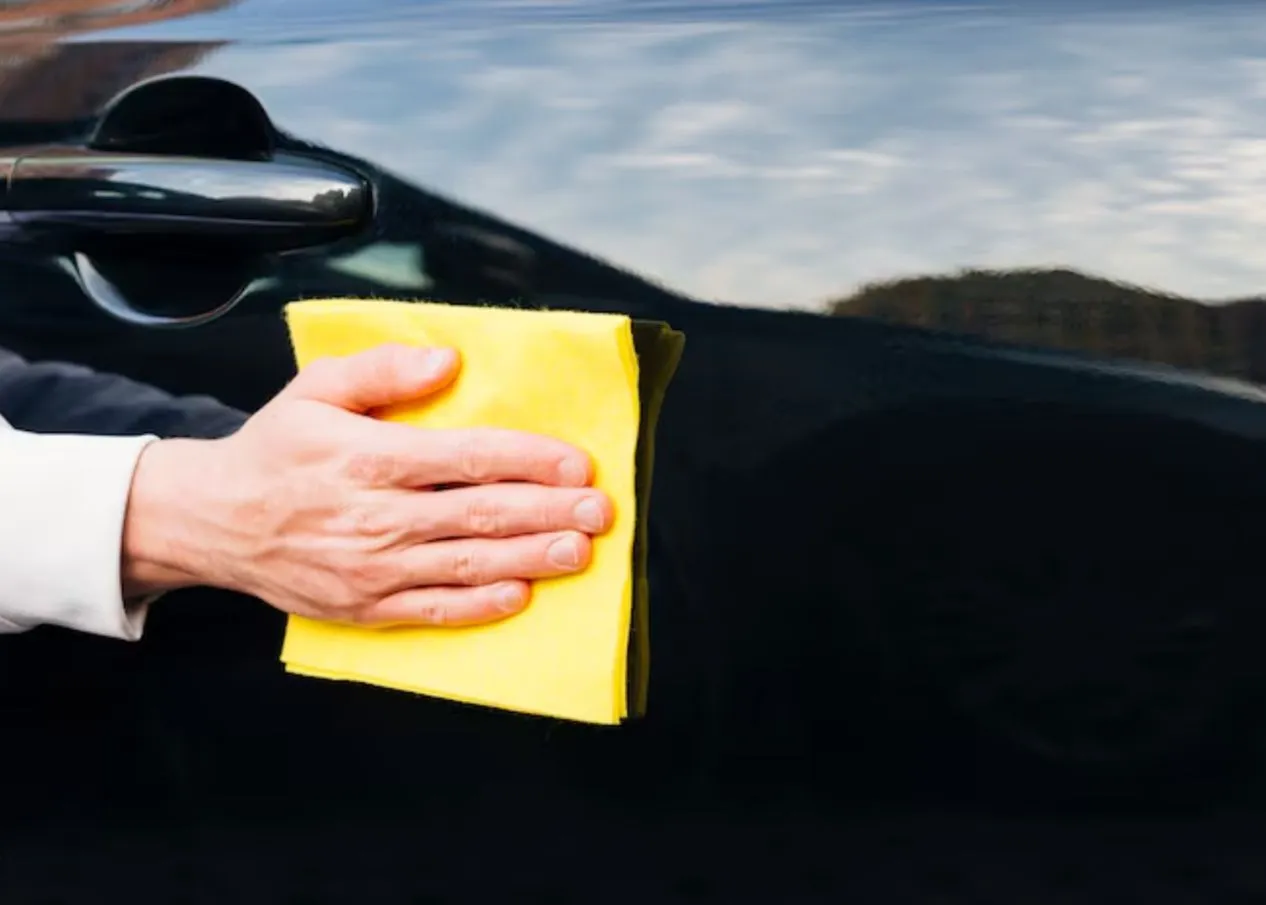
Ever stared at stubborn scuffs on your car mats or grime on the tires and wished for a quick fix? Melamine sponges, those handy cleaning pads made from super-fine foam, pop up as a tempting solution. They're champs at zapping stains without chemicals, but cars aren't your average kitchen counter. One wrong move, and you could scratch the paint or dull the finish. In this guide, we'll break down if melamine sponges are safe for your ride, where they shine, and how to avoid disasters.
What Makes Melamine Sponges Tick?
Melamine sponges look soft, but they're sneaky tough.
Melamine Foam is Powerful
Crafted from melamine foam, Melamine sponges act like ultra-fine sandpaper—think 3000 to 5000 grit. When wet, the foam's tiny pores grab dirt and lift it away by lightly scraping the surface. No soaps needed; just water does the trick.
Works of Foam Structure
This magic comes from the foam's structure. It's open-cell, with pores so small they trap particles down to 0.1 microns. That's why they erase marker from walls or grease from sinks in seconds. But on cars? The same abrasiveness that cleans can harm delicate spots. A quick test from detailing pros shows they remove built-up grime fast, yet they nibble at clear coats if you scrub too hard.
Density and Color Options
Density matters too. Lighter ones at 8 kg/m³ feel gentler for quick wipes, while denser 16-48 kg/m³ versions pack more punch for tough jobs. Colors? They come in red, blue, yellow, green, white, or gray—handy for sorting your glove box kit.
Are Melamine Sponges Safe on Car Paint?
Risks to Car Paint and Clear Coats
Short answer: Steer clear. Car paint and clear coats are thin and glossy, built for shine, not heavy abrasion. Melamine foam sands away a micro-layer of the surface to lift stains, which works great on tiles but spells trouble for your hood.
Real-World Damage Examples
Real-world risks hit hard. One car owner shared how a dry sponge dulled their fresh paint job, turning a bird poop wipe into a $500 buff-out bill. Tests from auto sites confirm: friction on paint can hit levels that leave swirl marks, especially in sunlight. Tinted windows? Even worse—the foam might strip the film right off.
Safe Use for Stubborn Stains
That said, not all hope is lost. If stains are embedded deep, like tree sap on a test patch, wet the sponge well and use feather-light pressure. But honestly? Skip it for paint. Grab a clay bar or pH-neutral wash instead. Your car's finish will thank you.
Where Can You Use Melamine Sponge on Cars Without Worry?
Good news: Melamine sponges rock on tougher car parts. Focus on non-painted, matte, or rubber spots where a little scrub won't show. Here's a quick rundown based on detailing tips from the pros.
Floor Mats and Interior Plastics
Rubber or plastic mats take a beating from shoes and spills. Melamine foam blasts off mud, coffee rings, or scuff marks without a trace. For dashboard edges or door sills—those matte plastics—it's a win. Just dampen and wipe; no residue left behind.
One tip from a road tripper: Cut a sponge into quarters for pocket-sized mats. The embossed patterns on options like the Colored Embossed Melamine Foam Sponge from FoamTech give extra grip, so you don't slip on wet rubber.
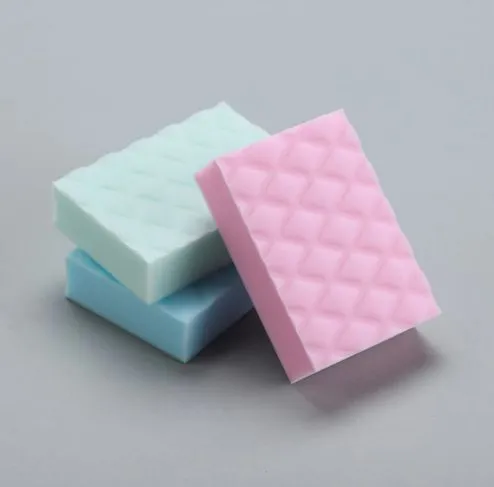
Tires and Wheel Rims
Tire sidewalls yellow from road salt or brake dust? A melamine sponge shines here. Rubber's tough; it shrugs off the abrasion. Wet the sponge, squeeze most water out, and rub in circles. Boom—tires look factory-fresh.
For rims, stick to painted or coated ones, not chrome. A 2024 auto forum thread raved about erasing tar spots on alloy wheels. Denser foam at 16 kg/m³ holds up for multiple tires without crumbling. Avoid polished bits, though; they'll fog up quick.
Glass Surfaces Like Windows and Headlights
Car glass laughs at melamine foam. It's harder than paint, so no scratches. Use it on windows for ink smudges or foggy buildup—pair with isopropyl for extra oomph. Headlights? Golden for yellowing lenses. Tape around edges to protect paint, then gently buff.
A DIY hack from online chats: For foggy mirrors or rearviews, the sponge's micro-pores polish without streaks. Lighter 8 kg/m³ density works best here, like in the Colored Magic Cleaning Sponge, keeping things soft and streak-free.
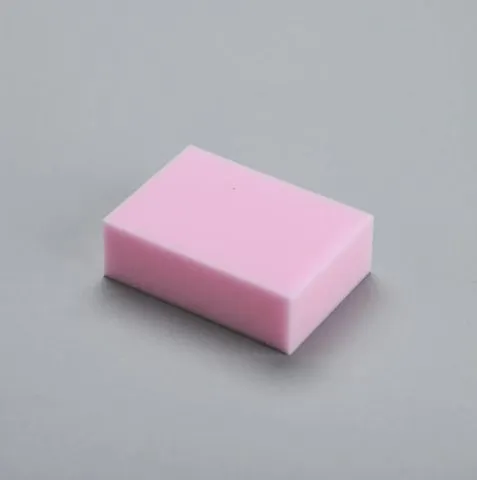
Top Melamine Sponge Picks for Car Cleaning
Not all sponges are equal. For cars, go for customizable ones with colors and embossing—they're fun to organize and built tough. The Colored Embossed Melamine Foam Sponge at 16-48 kg/m³ density tackles rims and mats with heat-pressed patterns for better hold. Sizes like 100 × 70 × 25 mm fit your hand perfectly, and you can tweak thickness or shapes for custom kits.
Prefer something lighter? FoamTech’s Colored Magic Cleaning Sponge at 8 kg/m³ is your go-to for glass and plastics. Bright hues make it easy to spot in the trunk, and it's reusable after a rinse—up to dozens of times before tossing.
Both are eco-friendly, non-toxic, and free of harsh stuff. No formaldehyde worries; just safe, daily-use foam that rinses clean. Bulk buyers love the packaging options for garage stocking.
Tips to Use Melamine Sponge on Your Car Right
Want to nail it every time? Follow these steps pulled from real user stories and expert advice.
Test and Prep Like a Pro
Always spot-test. Grab an out-of-sight area, like under a mat or tire tread. Dampen the sponge—dry ones are twice as rough. If it dulls or scratches, bail.
Pro move: Soak in plain water, wring till just moist. This softens the foam to Shore A28 levels, gentle enough for most rubber.
Scrub Smart, Not Hard
Light circles only. Let the pores do the work; heavy pressure amps up abrasion. Rinse the sponge often to ditch trapped grit—keeps your car scratch-free.
From a mechanic's tip: For headlights, go slow. One pass might do it, but overdo and you risk haze. Takes 2-3 minutes per side, tops.
Rinse and Reuse for Long Hauls
Post-scrub, hose everything down. The sponge? Squeeze, air-dry, and it's good for 20+ uses. Cuts waste and saves bucks—cheaper than pro detailing.
Fun aside: Color-code 'em. Red for tires, blue for glass. Makes grabbing the right one a no-brainer during pit stops.
Why Skip Melamine for Fancy Car Finishes?
High-end rides with ceramic coatings or wraps? Melamine's a hard no. It strips protectants faster than you can say "oops." Opt for microfiber mitts or dedicated auto wipes. Same for leather seats—foam frays the material, leaving pulls.
A quick stat: 70% of detailing forums warn against it on glossies. Better safe than sorry; your investment deserves kid-glove treatment.
Eco Perks and Why Cars Love These Sponges
Melamine foam's green side? Zero chemicals mean less runoff into storm drains. Reusable design slashes plastic waste—each sponge replaces a pack of disposables. Safe for pets too; no toxic fumes when cleaning Fido's paw prints off mats.
In a world of harsh cleaners, these sponges keep your garage fresh. Non-toxic build passes REACH tests, so breathe easy while scrubbing.
Contact FoamTech who can reply within 12 hours. Any requests or question about product or others are welcome.
FAQ
Q1: Will melamine sponge scratch my car windows?
A: Nope, glass is too tough. Wet it and wipe for streak-free shine, but skip tinted films—they might peel.
Q2: How often can I reuse a melamine sponge on tires?
A: Up to 20 times with rinses. Denser ones last longer for rubber jobs.
Q3: Is colored melamine foam safe for car interiors?
A: Yes, non-toxic and gentle on plastics. Colors help you sort for quick grabs.
Ever stared at stubborn scuffs on your car mats or grime on the tires and wished for a quick fix? Melamine sponges, those handy cleaning pads made from super-fine foam, pop up as a tempting solution. They're champs at zapping stains without chemicals, but cars aren't your average kitchen counter. One wrong move, and you could scratch the paint or dull the finish. In this guide, we'll break down if melamine sponges are safe for your ride, where they shine, and how to avoid disasters.
What Makes Melamine Sponges Tick?
Melamine sponges look soft, but they're sneaky tough.
Melamine Foam is Powerful
Crafted from melamine foam, Melamine sponges act like ultra-fine sandpaper—think 3000 to 5000 grit. When wet, the foam's tiny pores grab dirt and lift it away by lightly scraping the surface. No soaps needed; just water does the trick.
Works of Foam Structure
This magic comes from the foam's structure. It's open-cell, with pores so small they trap particles down to 0.1 microns. That's why they erase marker from walls or grease from sinks in seconds. But on cars? The same abrasiveness that cleans can harm delicate spots. A quick test from detailing pros shows they remove built-up grime fast, yet they nibble at clear coats if you scrub too hard.
Density and Color Options
Density matters too. Lighter ones at 8 kg/m³ feel gentler for quick wipes, while denser 16-48 kg/m³ versions pack more punch for tough jobs. Colors? They come in red, blue, yellow, green, white, or gray—handy for sorting your glove box kit.
Are Melamine Sponges Safe on Car Paint?
Risks to Car Paint and Clear Coats
Short answer: Steer clear. Car paint and clear coats are thin and glossy, built for shine, not heavy abrasion. Melamine foam sands away a micro-layer of the surface to lift stains, which works great on tiles but spells trouble for your hood.
Real-World Damage Examples
Real-world risks hit hard. One car owner shared how a dry sponge dulled their fresh paint job, turning a bird poop wipe into a $500 buff-out bill. Tests from auto sites confirm: friction on paint can hit levels that leave swirl marks, especially in sunlight. Tinted windows? Even worse—the foam might strip the film right off.
Safe Use for Stubborn Stains
That said, not all hope is lost. If stains are embedded deep, like tree sap on a test patch, wet the sponge well and use feather-light pressure. But honestly? Skip it for paint. Grab a clay bar or pH-neutral wash instead. Your car's finish will thank you.
Where Can You Use Melamine Sponge on Cars Without Worry?
Good news: Melamine sponges rock on tougher car parts. Focus on non-painted, matte, or rubber spots where a little scrub won't show. Here's a quick rundown based on detailing tips from the pros.
Floor Mats and Interior Plastics
Rubber or plastic mats take a beating from shoes and spills. Melamine foam blasts off mud, coffee rings, or scuff marks without a trace. For dashboard edges or door sills—those matte plastics—it's a win. Just dampen and wipe; no residue left behind.
One tip from a road tripper: Cut a sponge into quarters for pocket-sized mats. The embossed patterns on options like the Colored Embossed Melamine Foam Sponge from FoamTech give extra grip, so you don't slip on wet rubber.

Tires and Wheel Rims
Tire sidewalls yellow from road salt or brake dust? A melamine sponge shines here. Rubber's tough; it shrugs off the abrasion. Wet the sponge, squeeze most water out, and rub in circles. Boom—tires look factory-fresh.
For rims, stick to painted or coated ones, not chrome. A 2024 auto forum thread raved about erasing tar spots on alloy wheels. Denser foam at 16 kg/m³ holds up for multiple tires without crumbling. Avoid polished bits, though; they'll fog up quick.
Glass Surfaces Like Windows and Headlights
Car glass laughs at melamine foam. It's harder than paint, so no scratches. Use it on windows for ink smudges or foggy buildup—pair with isopropyl for extra oomph. Headlights? Golden for yellowing lenses. Tape around edges to protect paint, then gently buff.
A DIY hack from online chats: For foggy mirrors or rearviews, the sponge's micro-pores polish without streaks. Lighter 8 kg/m³ density works best here, like in the Colored Magic Cleaning Sponge, keeping things soft and streak-free.

Top Melamine Sponge Picks for Car Cleaning
Not all sponges are equal. For cars, go for customizable ones with colors and embossing—they're fun to organize and built tough. The Colored Embossed Melamine Foam Sponge at 16-48 kg/m³ density tackles rims and mats with heat-pressed patterns for better hold. Sizes like 100 × 70 × 25 mm fit your hand perfectly, and you can tweak thickness or shapes for custom kits.
Prefer something lighter? FoamTech’s Colored Magic Cleaning Sponge at 8 kg/m³ is your go-to for glass and plastics. Bright hues make it easy to spot in the trunk, and it's reusable after a rinse—up to dozens of times before tossing.
Both are eco-friendly, non-toxic, and free of harsh stuff. No formaldehyde worries; just safe, daily-use foam that rinses clean. Bulk buyers love the packaging options for garage stocking.
Tips to Use Melamine Sponge on Your Car Right
Want to nail it every time? Follow these steps pulled from real user stories and expert advice.
Test and Prep Like a Pro
Always spot-test. Grab an out-of-sight area, like under a mat or tire tread. Dampen the sponge—dry ones are twice as rough. If it dulls or scratches, bail.
Pro move: Soak in plain water, wring till just moist. This softens the foam to Shore A28 levels, gentle enough for most rubber.
Scrub Smart, Not Hard
Light circles only. Let the pores do the work; heavy pressure amps up abrasion. Rinse the sponge often to ditch trapped grit—keeps your car scratch-free.
From a mechanic's tip: For headlights, go slow. One pass might do it, but overdo and you risk haze. Takes 2-3 minutes per side, tops.
Rinse and Reuse for Long Hauls
Post-scrub, hose everything down. The sponge? Squeeze, air-dry, and it's good for 20+ uses. Cuts waste and saves bucks—cheaper than pro detailing.
Fun aside: Color-code 'em. Red for tires, blue for glass. Makes grabbing the right one a no-brainer during pit stops.
Why Skip Melamine for Fancy Car Finishes?
High-end rides with ceramic coatings or wraps? Melamine's a hard no. It strips protectants faster than you can say "oops." Opt for microfiber mitts or dedicated auto wipes. Same for leather seats—foam frays the material, leaving pulls.
A quick stat: 70% of detailing forums warn against it on glossies. Better safe than sorry; your investment deserves kid-glove treatment.
Eco Perks and Why Cars Love These Sponges
Melamine foam's green side? Zero chemicals mean less runoff into storm drains. Reusable design slashes plastic waste—each sponge replaces a pack of disposables. Safe for pets too; no toxic fumes when cleaning Fido's paw prints off mats.
In a world of harsh cleaners, these sponges keep your garage fresh. Non-toxic build passes REACH tests, so breathe easy while scrubbing.
Contact FoamTech who can reply within 12 hours. Any requests or question about product or others are welcome.
FAQ
Q1: Will melamine sponge scratch my car windows?
A: Nope, glass is too tough. Wet it and wipe for streak-free shine, but skip tinted films—they might peel.
Q2: How often can I reuse a melamine sponge on tires?
A: Up to 20 times with rinses. Denser ones last longer for rubber jobs.
Q3: Is colored melamine foam safe for car interiors?
A: Yes, non-toxic and gentle on plastics. Colors help you sort for quick grabs.

